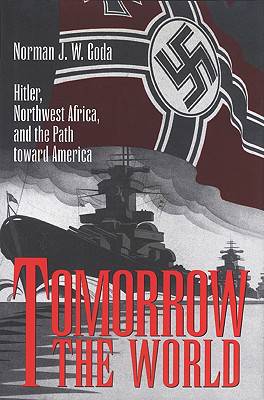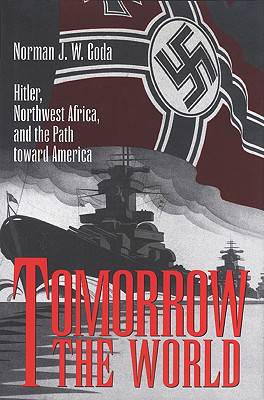
- Afhalen na 1 uur in een winkel met voorraad
- Gratis thuislevering in België vanaf € 30
- Ruim aanbod met 7 miljoen producten
- Afhalen na 1 uur in een winkel met voorraad
- Gratis thuislevering in België vanaf € 30
- Ruim aanbod met 7 miljoen producten
Zoeken
€ 58,95
+ 117 punten
Omschrijving
Did Adolf Hitler's Germany have designs on the Western Hemisphere? As early as the 1920s Hitler had repeatedly argued that the Nordic struggle for racial dominance would become worldwide, but his thoughts regarding the United States were sometimes obscured by his aims in Europe. In Tomorrow the World, Norman J. W. Goda retraces the documentary evidence to demonstrate that Germany's long-term strategy, developed early in World War II, pointed toward the United States following the expected conquest of the European continent. Goda questions both the more traditional interpretations that Hitler's Germany operated from unplanned opportunism and that its aims were confined to the European continent. His extremely close reading of the diplomatic and military sources from German, Spanish, and French records also opens new windows on the policies of Franco's Spain and Petain's France. By focusing on policy formulation and implementation at the political and diplomatic level, he adds substantial evidence for the view that Hitler's ambitions were not just grandiose table talk, but formed the basis for concrete military plans and building projects.
Specificaties
Betrokkenen
- Auteur(s):
- Uitgeverij:
Inhoud
- Aantal bladzijden:
- 352
- Taal:
- Engels
- Reeks:
- Reeksnummer:
- nr. 57
Eigenschappen
- Productcode (EAN):
- 9780890968079
- Verschijningsdatum:
- 1/04/1998
- Uitvoering:
- Hardcover
- Formaat:
- Genaaid
- Afmetingen:
- 164 mm x 244 mm
- Gewicht:
- 807 g

Alleen bij Standaard Boekhandel
+ 117 punten op je klantenkaart van Standaard Boekhandel
Beoordelingen
We publiceren alleen reviews die voldoen aan de voorwaarden voor reviews. Bekijk onze voorwaarden voor reviews.











